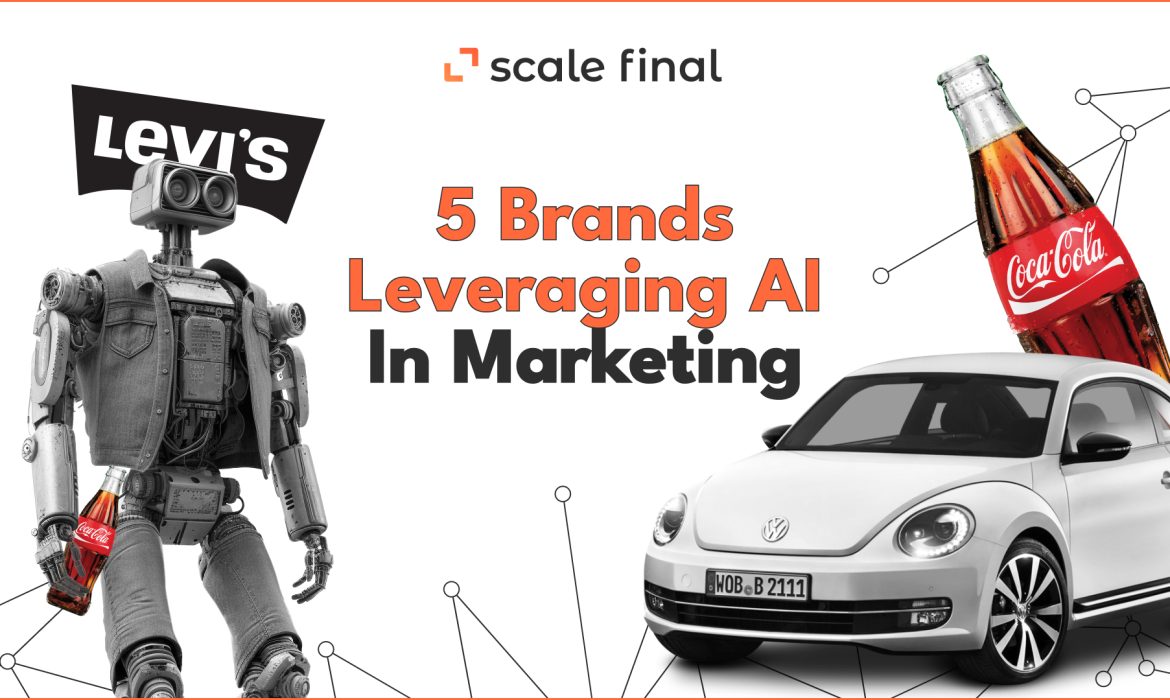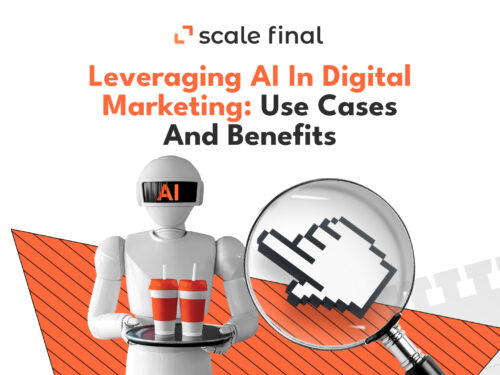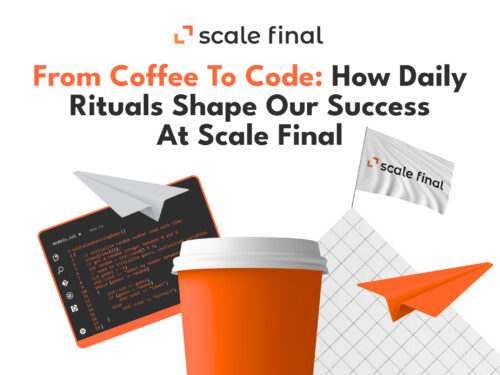Home • Blog • 5 brands leveraging AI in marketing
5 brands leveraging AI in marketing
Artificial intelligence has been on the rise since Open AI released the language reinforcement learning model to the masses. Since then, prominent high tech players even signed a letter to pause AI development because it endangers humanity. Simultaniosly, AI applications are being launched and hype every day.
Some have been using AI for a long time. Now more than ever we can easily use it in marketing: generate texts, images, advertising campaigns and so on.
We won’t delve into basic AI implementations like chatbots, but move straight to the bigger fish: recognized brands leveraging AI for advertising and optimization.
Cars, media, fashion – it’s all in there. These brands use artificial intelligence and machine learning technologies as an integral part of their marketing strategy.
Volkswagen AI outperforms an entire marketing agency

In 2016, VW decided to hire Blackwood Seven, an analytics agency that used artificial intelligence and was responsible for advertising VW cars. The agency’s AI performs predictive analytics and helps decide how to run ads and how much money to spend on them based on the data it gathers. For the analysis, the neural network uses market data such as fuel prices, competitors’ prices and general interest in a particular car model.
As a result of this collaboration, the agency increased sales of the Volkswagen !up model by 14% and sales of some other models rose by up to 20%
Who is this girl in the Levi’s campaign?

When we wrote that it’s time for copywriters to pack their bags due to the AI revolution (actually, we’re safe for now), we weren’t really kidding. Of course, it’s not just copywriters who are “in danger”: AI models can easy replace real models with today’s technology.
Related: Skilled Copywriter VS Machine: Why Chat GPT Won’t Be Able to Replace True Professionals?
While digitalization is not new, and last year digital influencers were very popular in the fashion industry, AI is taking this game to the next level.
On March 22, Levi’s announced its collaboration with Lalaland.ai, a company that has developed a neural network to create AI models that look exactly like humans. So far, it’s unclear how this will affect Levi’s revenue. Models can rest easy for now, as the company has no plans to reduce the number of live photo shoots.
Can you tell from the picture if it’s an AI or a human? It’s a little creepy, isn’t it?
Coca-Cola: AI is coming
This year, Coca-Cola announced a partnership with consulting firm Bain & Company and OpenAI. Coca-Cola will use ChatGPT and DALL-E to improve marketing and attract new customers.

Coca Cola believes these neural networks will help the company’s marketers create personalized advertising and targeted messages.
In a statement provided to British food news site The Grocer, John Murphy, chief financial officer and president of Coca-Cola, said the marketing prospects are one of the biggest draws of the deal.
“We have a couple of really interesting cases with the marketing team to enhance the work that we’re already doing with our new marketing model,” Murphy said, “and to be able to marry the ability to deliver creative content quickly and with exponential efficiency.”
The first major project is Create Real Magic. Artists from around the world download their work to be displayed on Coke’s digital billboards in New York’s Time Square and London’s Piccadilly Circus.
Can you tell a real from an artificial voice?

In January 2023, Apple introduced Digital Narration, a service for authors and publishers. It lets you add voices to books in Apple Books using artificial intelligence.
Digital voices are already available for some paid and free audiobooks. At the same time, Apple itself did not make any loud announcements about it. So far, only two digital voices are available: Madison and Jackson. In the future, two more voices are to be added: Helena and Mitchell. This dubbing is much cheaper and takes less time.
And it’s impossible to tell the human voice from the program. A tip for those who don’t like to call their colleagues.
Success story for The Economist

If you’re not yet part of the team investigating the predictions of the future hinted at on the covers of The Economist, join in.
In 2014, The Economist was in serious decline. Old readers were leaving the site, and it was failing to attract new ones. So the company decided to embrace artificial intelligence technology and use it to make personalized ads. The Economist set a goal of attracting 650,000 customers with a media budget of 1.2 million pounds.
Thanks to AI algorithms, 50% of this goal was achieved in just nine days. In total, The Economist gained over 3.6 million new users, some of whom became regular readers of the newspaper. The profitability of the campaign was more than 10:1, thanks to revenue from new subscribers.
The Economist hasn’t given up on working with AI. Between 2020 and 2021, for example, it gained 90,000 new users who paid for a subscription to the newspaper.
The World’s First AI Magazine Cover

You probably didn’t miss the summer buzz, but we put it on the list anyway. First timers always get their spot.
In June 2022, a new issue of Cosmopolitan magazine came out, the cover generated by a neural network. The magazine’s editors, members of the OpenAI Artificial Intelligence Research Lab, and digital artist Karen X tested the technology on various text queries. These included “A young woman’s hand with nail polish holding a Cosmopolitan cocktail,” “A fashionable woman closeup directed by Wes Anderson,” and “A woman wearing an earring that a portal to another universe.”
In the end, the team felt that the most successful version of the cover was the neural network’s response to the query “wide-angle shot from below of a female astronaut with an athletic feminine body walking with swagger toward camera on Mars in an infinite universe, synthwave digital art”
Author
-
 ScaleFinal Content Writer
ScaleFinal Content WriterExperienced writer in different domains. I package meaning into words and bring people together. Know how to convey the vision and values of a product in writing. I like reading, movies, sports and blockchain.
View all posts






